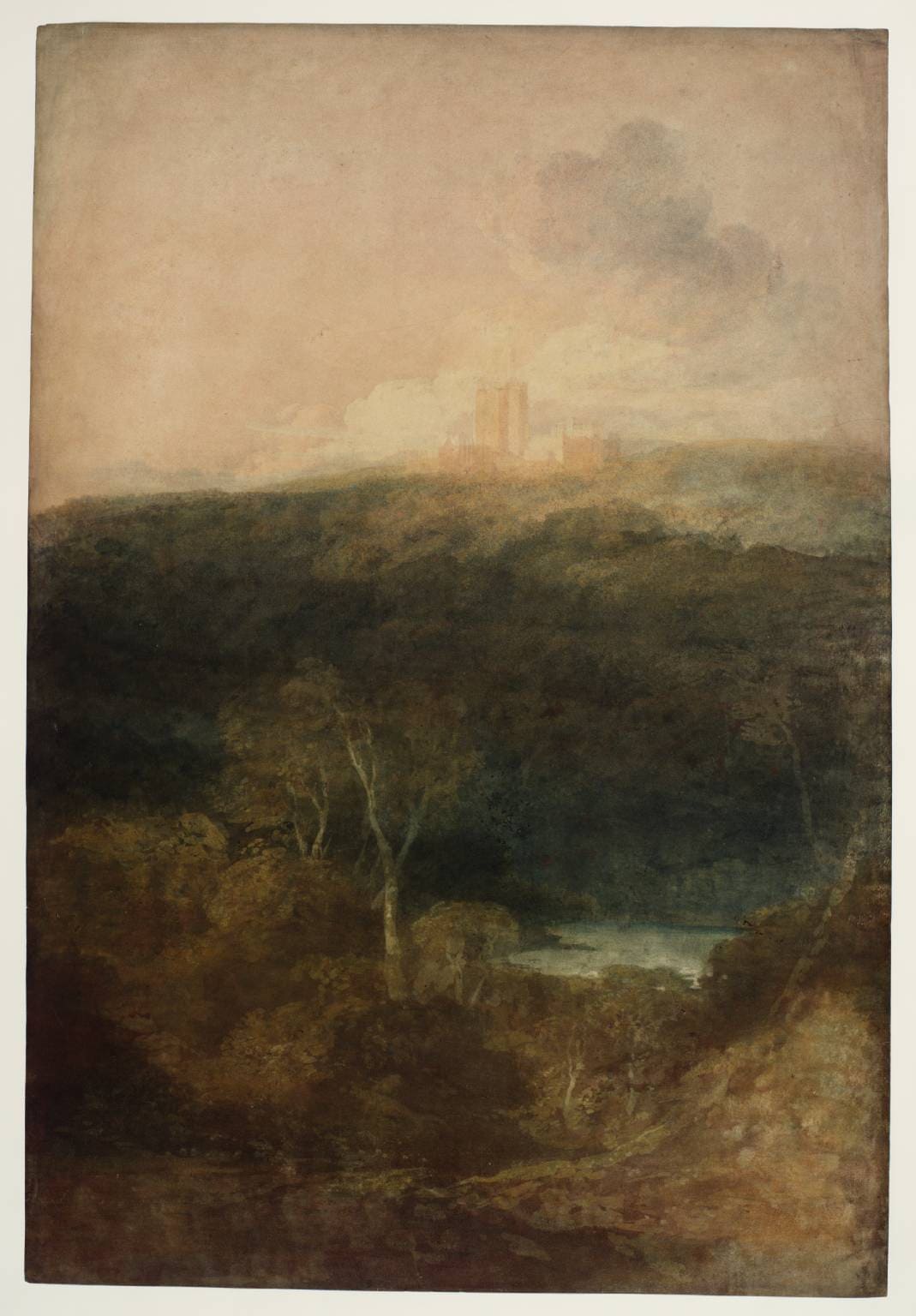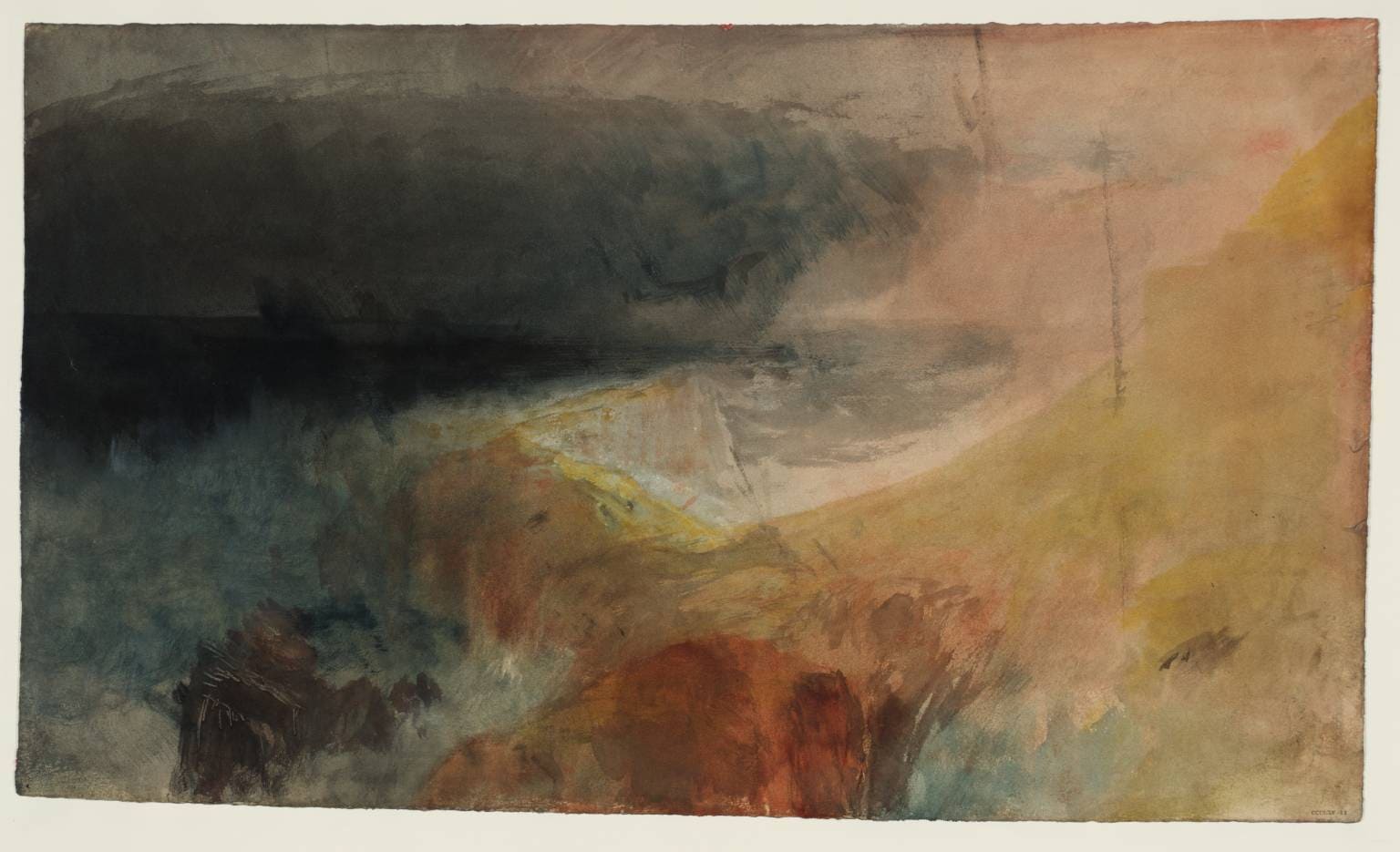The expression “master of light” takes on its full meaning at the Turner exhibition at the Jacquemart-André museum. Little by little, the museum shows how the watercolorist used this technique as a working support before mastering this art. About sixty watercolors by the English painter have been selected from over 32,000 works kept at the Tate Britain museum in London. Rooms after rooms, we travel back to the beginning of the 19th century, to an equally misty and bright England and Europe.
HE PAINTS COLORS BUT HE THINKS IN LIGHT AND SHADE
It was on historical and architectural subjects that William Turner (1775-1851) began watercolor painting. As a student at the Royal Academy in London, he regularly traveled to different parts of England and Wales to find inspiration. For example, he painted the vaults of Durham Cathedral between 1797 and 1798. One notices the breakthroughs of the sun’s rays through the stained-glass windows and already the interest of the painter for the light that modifies a shot. One can also feel the coolness of these religious places through the stone so delicately represented, sometimes situated in an humid darkness, sometimes illuminated by a skylight.

Photo © Tate
In the same room, the view of Fonthill Abbey (1799-1800) introduces the series of landscapes watercolors. There are four successive shots that take us to the background of the painting and build the perspective. These views allow the painter to theorize his technique where several shades of colors are mixed. “He paints colors but he thinks in light and shade.” This is what the English writer and art critic John Ruskin used to say about Turner.

Photo © Tate
MY WORK CONSISTS IN PAINTING WHAT I SEE, NOT WHAT I KNOW TO BE THERE
Turner became the theorist of landscape painting with the publication of his book called Liber Studiorum (Book of Studies, 1807) in which he defined landscape from watercolor patterns. After his studies, he decided to travel across Europe and his watercolors diversified. Between 1817 and 1820, he roamed across the Netherlands, the German Rhineland, and Italy. Those travels allowed him to find in watercolor a particular freedom of expression as he accentuated his work with color and light thanks to these new views. He painted Venice: San Giorgio, Maggiore Early Morning (1819) in which is represented this timeless mist and this dazzling but soft luminosity, peculiar to the city.

Photo © Tate
From the Netherlands to Italy, passing through France.
He kept on traveling for so many years and also roamed across France. He made several sketches in pencil of the banks of the Loire and the Seine which were then finished in watercolor in his studio. These small formats were engraved then published in his travel books from 1833 to 1835. This is how one can find some details specified in pencil, gouache or ink, which add structure to the work. While he was traveling, he was asked to illustrate some book editions such as those of Sir Walter Scott.
The fifth room of the exhibition is particularly astonishing. Turner’s style is surprisingly modern, on the verge of abstraction as the themes are so dreamlike. He made colorful sketches with a lot of freedom. The 1834 work Land’s End, Cornwall is one of the studies in which the work of color makes us think of of an inner expression of moods or spontaneous atmospheres. “My work consists in painting what I see, not what I know to be there”, explained the painter.

Photo © Tate
Then, the visitor walks by the artist’s pigment studio, which highlights his taste for color. In the following rooms, one notices a different texture from watercolor and more assertive colors. A few decades after his first watercolors, these views of Venice are still surprising, with even more vivid skies.
The exhibition will take place at the Jacquemart-André museum (in Paris' 8th arrondissement) From May 26, 2020 to January 11, 2021. It is also available virtually on the museum's website.




